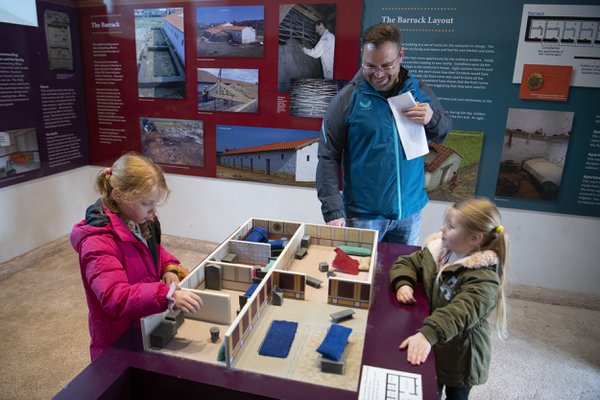The Arbeia Roman Fort Museum

The Arbeia Roman Fort Museum
The Museum building houses a fine collection of objects found during the excavations at Arbeia. The collection includes the most complete set of ring mail armour found in Britain and the tombstones of Regina and Victor that illustrate the cosmopolitan nature of Arbeia’s changing population. Regina was a British woman from Kent who was first a slave then a freedwoman and wife of Barates, a merchant from Palmyra in modern Syria. Victor was also a former slave, from North Africa, freed by Numerianus, a trooper in a regiment of Spanish cavalry.
Archaeologists have been excavating at Arbeia since the 1870s – almost 150 years! What has been found gives us a broad picture of what life was like in and around the fort of Arbeia during the Roman occupation of Britain.
Objects that archaeologists come across when digging in the ground are called finds and the Arbeia Museum holds a collection of finds, most of which were found during excavations on or nearby the Roman Fort. Some of the objects are handmade and some are natural (bones and shells). A range of shells and a fishhook show how linked Arbeia Fort is to the sea.
Found objects are carefully cleaned and catalogued before archaeologists do their research. Selected objects are then displayed in the museum with labels that give visitors information. The objects tell us a lot about the lives (and deaths) of the soldiers and their families: what they wore, what they ate, what they cooked with, and what they believed in. See the Roman Army Life Information Sheet for details.
Many of the objects have been preserved because of a fire at the Fort at the end of the 3rd century. It was a tragedy for the fort, but fortunate for us as it preserved objects that would not have otherwise survived.
Handcrafted objects include coins, armour, weapons, ornaments, tesserae (small square tiles), seals, pottery, glass, jewellery and carved altars and tombstones. There is even some Roman graffiti. Tombstones are among the most impressive finds and tell us that people who lived at Arbeia came from all over the world.
Many bones have been found on site. The most common are those belonging to cows, sheep or pigs, giving evidence of local farming activity. Bones of wild boar, hare, and deer were also found, but these animals would have been hunted. (There were no rabbits in England for another 600 years.) The human skeleton in the museum illustrates a burial with grave goods and shows us how archaeologists can determine the identity of the dead.




